Ale Britannia!
British Ales – Part Two
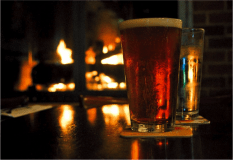
I love British ales. There’s a broad range of distinct styles – linked to a common heritage. In our last installment on British Ales – Part One – we explored British beer culture and a number of beer styles, including English Bitter, English Brown Ale, English Mild Ale, Scottish Ales and Welsh Ales.
In this segment, we will look at some of my favorite British styles – English IPAs, Irish ales, Stouts, Porters, Old Ales and Barleywines.
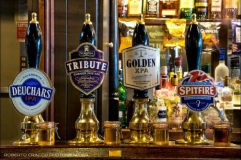
India Pale Ale – the Original IPA
First introduced in the mid to late 1700s, English IPAs enjoyed popularity during the peak of the British Empire, but sadly deteriorated to weak pales ales that lacked any degree of hoppiness during the 20th century. American craft brewers revived the style over the past 20 years to the phenomenon it is today.
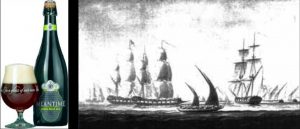
To satisfy demand for beer in the far-flung corners of the Empire – especially India, brewers needed to modify their recipes. Because it was too hot to brew in India at the time, English brewers needed to preserve their beers during the long six-month journey to the Subcontinent. They did this by brewing beers with much larger quantities of hops and sometimes more alcoholic strength. George Hodgson’s Bow Brewery in London brewed the first IPAs, but eventually the epicenter of IPA production ended up in the town of Burton on the Trent river – largely due to Burton’s very minerally water, which accentuates bitterness and body.
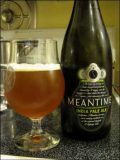
Traditional English IPAs are somewhat pale with a high level of bittering, flavor and aroma hops, and are in the 5 – 7.5 % alcohol range. While not many traditional IPAs used to exist in modern England, breweries such as Meantime, Allsop’s, Bass and Samuel Smith’s make solid examples. The British craft beer movement has prompted a revival of the classic style.
Irish Red Ales
While Ireland is famous for its Stouts, they only account for about 40 percent of beer sales. The bulk of the Irish market drinks lagers and red ales.

The Irish Red Ale style is easy drinking and malt-forward, with a dry roasty finish. Hop bitterness is relatively low – between 17 and 28 IBUs, with little to no hop flavor or aroma. A moderate alcohol level (3.8 – 5.0 %) makes for a sessionable and easy drinking ale.
Good examples of traditional Irish Red are Smithwick’s, O’Hara’s, George Killian and Kilkenny. American craft versions may be stronger and more hoppy.
Porter – The Beer of the Empire
At the peak of the British Empire – from the late 1700s to mid-1800s – Porter was the dominant beer in England. Porter got its name because of its popularity with the London working class, performing various load-carrying tasks.
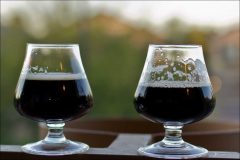
The Porter style has evolved over the years. Today, English Porters are dark and malty with a restrained roastiness and bitterness. They exhibit bready, biscuity, and toasted malt flavors with notes of chocolate, caramel, coffee, nuts and toffee. Medium-bodied with a creamy texture, Porters are low in bitterness and relatively low in alcohol (4.0 – 5.5 % ABV).
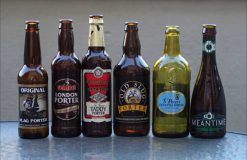
Good examples of English Porter include Meantime, Fuller’s and Samuel Smith’s Taddy Porter. American versions of Porter tend to be stronger, less sweet, and more roasty than their English cousins.
Stout – The Dark Side of British Brewing
Stouts originated as stronger versions of Porter, and were referred to as “Stout Porters.” Eventually, Stouts became lighter than Porters and were just referred to as Stouts. There are five distinct versions of Stout in England and Ireland.

Irish Stouts are session-strength dark brown to black beers with a tan head and a smooth mouthfeel. They are typically in the 4.0 – 4.5% alcohol range. Guinness began using black malts in the late 1800s to differentiate it from London Stout. In County Cork, Murphy’s and Beamish stouts are sweeter and less bitter and use chocolate and specialty malts rather than black malt or roasted barley. The Cork Stouts are more similar to historical London Stouts.
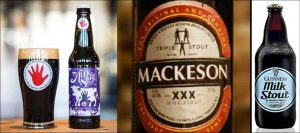
English Sweet Stouts are dark, sweet and full-bodied with a moderate roastiness that suggests a sweetened espresso. The sweetness comes from lower bitterness, non-fermentable dextrins and the addition of lactose, or milk sugar. Because of the lactose, sweet stouts are often referred to as “milk stouts.” Sweet Stouts are generally in the 4.0 to 6.0% alcohol range.
Commercial examples include Mackeson XXX, St. Peter’s and Marston’s.
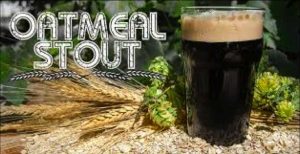
Oatmeal Stouts are similar to Sweet Stouts – dark and creamy with a smooth silky mouthfeel from the oatmeal, which is used to enhance fullness, body and complexity. They typically do not use lactose. Originally from Scotland, they are between Irish Stouts and Sweet Stouts in sweetness. Samuel Smith’s and Young’s make excellent examples.
Russian Imperial Stouts are Intensely flavored high-gravity dark ales with noticeable alcohol, dark fruit and roasty burnt flavors. They were brewed to high gravity (8.0 to 12.0%) and high hopping rates (50 to 90 IBUs) for export to Baltic states and Russia. The strong English Stout Russian was a favorite of the Imperial Court, including Catherine the Great and Rasputin.
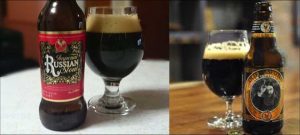
The first Imperial Stout exported to Russia was made by Barclay Perkins in 1781. That very same beer is brewed today by the Courage Brewery in Reading, England.
British and American craft brewers have embraced the style for its strength, hoppiness and complex flavor profile. Some of these beers are brewed to strengths of 18% or more. Commercially available Russian Imperial Stout include Courage, Samuel Smith’s, Firestone Walker Parabola, Three Floyds Dark Lord, North Coast Old Rasputin, Oscar Blues Ten FIDY, and Stone’s Fyodor.
Foreign Extra Stouts are Stouts that are stronger (6.3 to 8.0%) and more complex than other Irish Stouts. They are brewed for the export market and are popular in Africa, Asia and the Caribbean. Guinness Foreign Extra Stout accounts for 40% of the Guinness brewed worldwide. Commercial examples include Guinness, Cooper’s Foreign Extra Stout, Ridgeway Foreign Export Stout and Southwark Old Stout.

Tropical Stouts are closely related to Foreign Extra Stouts. They are very dark, sweet, fruity, moderately strong ales with smooth roasty flavors and no burnt harshness. They are often brewed in foreign markets with local sugars and ingredients. Commercial examples include Dragon Stout, Jamaica Stout, Lion Stout and Royal Extra Stout.
English Old Ales are something of a cross between Bitters and Barleywines and are typically aged for one to three years, allowing them to develop aged characteristics. The are generally strong (6.0 to 9.0% ABV) and heavily hopped (30 to 60 IBUs).
They are malty, somewhat sweet and warming, with lots of caramel, toffee and dried fruit notes. Commercial examples include Fuller’s Vintage Ale, Samuel Smith’s Yorkshire Stingo and Theakson’s Old Peculiar.
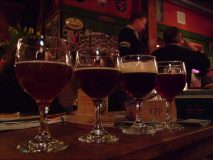
English Barleywines are the richest and strongest of the English Ales, coming in at 8.0 to 12.0% alcohol. They showcase rich maltiness, intense complexity and a high level of bitterness, although they are not as hoppy as American Barleywines. English Barleywines are often characterized as “fireside beers,” and are aged significantly prior to release, which is usually during the winter or the holiday season.
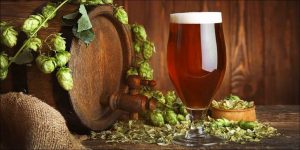
Commercial examples are the legendary Thomas Hardy’s Ale, Fullers Golden Pride and Young’s Old Nick.
Many of these British Ales are only available bottled but many can be found fresh from local craft brewers and bottle shops. I personally consider British ales to be some of the world’s great beers. Take the time to explore and appreciate them. You will no doubt come up with some new favorites!




Leave a Reply